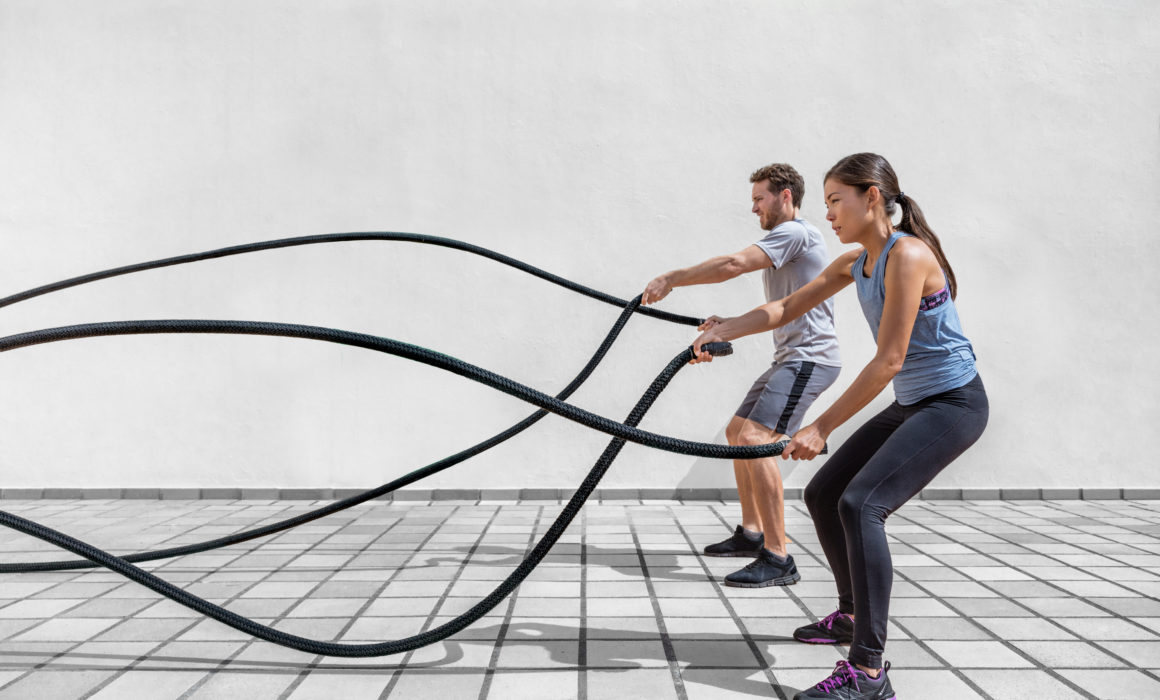What’s Better, High Intensity or Low Intensity Training?
What’s Better, High Intensity or Low Intensity Training?
What type of exercise is better for your body—high intensity or low intensity training? The answer is not that simple. It comes down to individual goals and how your body responds to exercise on a given day. Is your goal to decrease your body fat percentage, increase your VO2 max, recover faster, or have more power for anaerobic work? Different energy systems are used when performing high and low intensity workouts as well as a different ratio of carbs vs. fats burned within the body.
Low intensity exercise is aerobic work where your heart rate stays within 60-80% of your max heart rate. Working on your endurance boosts your heart’s left ventricle that pushes blood out to the rest of the body to increase in capacity. That means that more oxygen gets delivered to nourish crucial tissues and organs which support better overall health. Not only does more oxygen reach crucial parts of the body, but your circulatory system gets better at transferring it from blood to tissue. That’s because low intensity exercise increases capillary density, so more channels are on hand to deliver oxygen to the tissue’s cells. This in turn increases base oxygen intake leading to enhanced endurance.
High intensity exercise, often referred to as HIIT (high intensity interval training) or SIT (sprint interval training), burns more calories in a shorter period of time compared to the time put in for low intensity training. However, high intensity exercise escalates your resting metabolism so you burn more calories post exercise. The high intensity nature provides improved athletic capacity and condition as well as improved glucose metabolism. High intensity may not be as effective for treating hyperlipidemia and obesity, but has been shown to build more lean body mass and increase recovery time which is more applicable to sports performance athletes.
You get more bang for the buck when muscles burn fat because fat has more than twice the number of calories (nine calories vs. four calories per gram from carbs). Fat is the high-test fuel. Less oxygen reaches the muscle when you exercise hard, or fast, and get out of breath. The term “sucking wind” means that you are working hard to get more oxygen in. When less oxygen reaches the muscles, known as oxygen debt, carbohydrates become the preferred fuel because they burn completely with less oxygen.
With the information above, can we now narrow down what type of exercise is right for you? The simple answer is to combine both high and low intensity exercise into your routine. Where it gets confusing is when we ask ourselves, “what ratio of each should I do? 50/50?”. This is where it becomes individualized. The most popular ratio, and what I use for metabolic workouts, is based on Olympic programming. This breaks down low, moderate, and high intensity workouts into a ratio of 80% low, 12% moderate, and 8% high intensity throughout the week. After looking at these numbers, doesn’t the ratio of high intensity workouts seem very low?
The reason is that low intensity exercise promotes longevity and muscle recovery when done correctly. An overdose of high intensity exercise has its downsides. Although it is a great way to increase resting metabolism, crush carb stores in the body, and increase VO2 max, it is a sympathetic stressor and can lead to adrenal fatigue. In large doses, high intensity puts an incredible strain on your nervous system, joints and muscles; especially if you are overweight and unfit. It also puts you at a high risk of overtraining, which is a real danger as it can ruin your immune system, cause insomnia, affect your appetite, and release cortisol, which in turn can make you more likely to put on fat.
I would love to see more individuals build an excellent oxidative system base through low intensity exercise while slowly adding in high intensity training one day per week so their bodies can adapt appropriately. Work your way up to the 80%, 12%, and 8% and then get creative with your workouts. So long as you’re in the correct energy system, you may do CrossFit, Tabata, 5K’s, marathons, sprints, lifting—take your pick!

